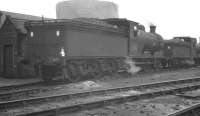Monkland and Kirkintilloch Railway
Introduction
This early railway is mostly closed. It was largely a coal railway, a canal feeder, connecting collieries and iron works in the Monklands north west to the Forth and Clyde Canal at Kirktintilloch Basin. Of the roughly 10 mile length, only portions of the line remain in use (as part of the West Coast Main Line) from Garnqueen South Junction to Gartsherrie East Junction, from near Sunnyside Junction to Greenside Junction (part of the Glasgow to Airdrie line),and from Sunnyside Junction to Whifflet (a diversionary route). Much of the rest of the route is now a footpath and cyclepath. For much of its length, in the north particularly, it followed a similar course to a major canal feeder for the Forth and Clyde Canal. The Monkland and Kirkintilloch Railway was the first in Britain to have the right to operate locomotives in its Act of Parliament.
Why built
This railway connected the Forth and Clyde Canal to the Monklands district and in particular its coal mines. Coal bound for Edinburgh via the Union Canal came to the canal at Kirkintilloch Basin. Coal for Glasgow might preferentially use the Monkland Canal or, later, the Garnkirk and Glasgow Railway.
The line was surveyed in 1823, Act 1824 and opened 1826.
Engineers Thomas Granger (survey) and John Miller. Contractor Thomas Grainger, Charles McCaul from Gartsherrie to Palacecraig and the Kipps Branch. Rails from the Bedlington Iron Company. Gauge 4ft 6in.
In 1831, Murdoch Aitken & Co's Hill Street Foundry provided locomotives for the line, replacing horses, as the traffic increased not long after opening.
The line was single track, almost entirely doubled 1839 to 1840. A deviations at Gartsherrie (Hornock) was carried out by William Baird and Co to allow enlargement of their Gartsherrie Iron Works in the 1860s. Coatbridge Sunnyside is on this deviation, the Hornock Deviation (Monkland and Kirkintilloch Railway).
Dates
Portions of line and locations
This line is divided into a number of portions.
Kirkintilloch to Cairnhill
Goods and (briefly) passenger line from Kirkintilloch Basin to Cairnhill Bridge.
This was the northern terminus of the Monkland and Kirkintilloch Railway at 90 degrees to the Forth and Clyde Canal. It was a goods depot and briefly a passenger station. It was located in the west of Kirkintilloch. Also known as Middlemuir Basin.
...
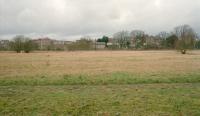
Ewan Crawford //2001
This foundry was established on the south bank of the Forth and Clyde Canal in 1861/2 by Alexander Smith, formerly of the Sun Foundry [Glasgow]. It was separated from the Canal Bank by Southbank Road.
...
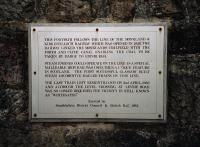
Ewan Crawford //1987
Also known as Woodleys Junction. This was the junction between the 1826 Monkland and Kirkintilloch Railway and a 1848 spur from Middlemuir Junction on the [[Campsie Branch (Edinburgh and Glasgow Railway). The lines meeting here were single track. Originally the line from Middlemuir Junction was double, dropping to single immediately before the junction.
...
See also
Campsie Branch (Edinburgh and Glasgow Railway)
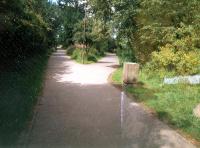
Ewan Crawford //1987
This was the junction between the Monkland and Kirkintilloch Railway and the curve up to the Edinburgh and Glasgow Railway's at Garngaber High Junction. The line dropped quite steeply from the high junction down to the older line and had a fairly tight curve to negotiate before running parallel for a little way to reach the junction.
...
See also
Garngaber Curve (Monkland and Kirkintilloch Railway)
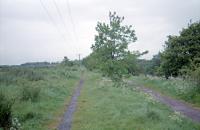
Ewan Crawford //1997
This siding was at Muckcroft Level Crossing, east of the crossing and on the south side, approached from the east. ...
More detailsSee also
Garngaber Curve (Monkland and Kirkintilloch Railway)
The line from Garnqueen divided into three here. Going to the north west, the original M&K route, two single track lines ran in parallel, giving the appearance of a double track line. The western track ran to Garngaber High Junction, the eastern to Woodley Junction. A newer route to Waterside Junction ran to the north. This later route was a conventional double track.
...
See also
Garngaber Curve (Monkland and Kirkintilloch Railway)
Waterside Junction to Bridgend Junction (North British Railway)

Ewan Crawford //
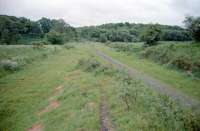
Ewan Crawford //1997

Alistair MacKenzie //1980
This station was located at Bridgend in the north west of present day Moodiesburn, which did not exist when the station was open. It was north of Chryston, by which name the goods station was known some time after 1900.
...
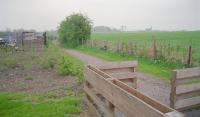
Ewan Crawford 03/05/1997
This was a tunnel under the Cumbernauld turnpike road with a clearance of 9ft over the rails. The tunnel might also be referred to as Bedlay, Chryston or Moodiesburn. Bedlay House was just to the west, Chryston beyond, and Moodiesburn to the east.
...
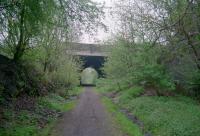
Ewan Crawford 03/05/1997
This signal box opened in 1895. It was located at the level crossing south of Avenuehead. The box was on the east side of the crossing, south of the line. The line here was double track. It was reduced to a gate box in 1909. This section of line, Garngaber Low Junction to Bedlay Junction, closed in 1965.
...
This was the junction for 1905 Bedlay Colliery opened on the 1826 Monkland and Kirkintilloch Railway. The colliery line was single track and approached from the west. The M&K was double track by the opening of the colliery. A signal box opened in 1909 in the 'V' of the junction. A little to the east on the colliery branch was an exchange yard. There was a quarry siding ([[Drumcavel Rock ...
More detailsSee also
Bedlay Colliery (William Baird & Co)
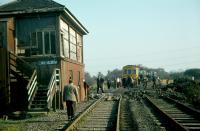
Colin Kirkwood 18/10/1969
This short lived station was opened by the Monkland Railways company on the former Monkland and Kirkintilloch Railway, a line which was chiefly concerned with mineral traffic, not passengers.
...
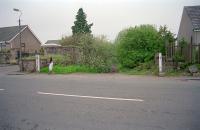
Ewan Crawford 03/05/1997
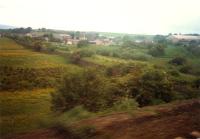
Ewan Crawford //1987
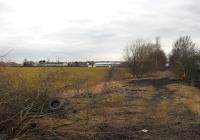
John Robin 09/03/2010
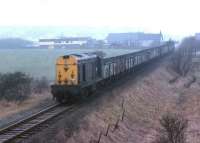
Alastair McLellan //
The 1826 Monkland and Kirkintilloch Railway was met here by the 1848 Caledonian Railway. The Caledonian used the M&K route to reach Garnqueen East Junction to the south, so a short portion of the main line was one of the earliest railways belonged to the North British. There were restrictions on the NB for their use of this section of their line to avoid the blocking of expresses by ...
More detailsSee also
Caledonian Railway
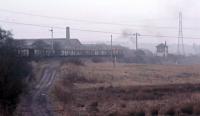
Alastair McLellan //
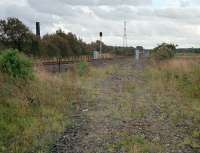
Ewan Crawford //1987
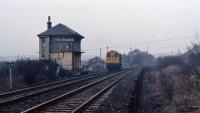
Alastair McLellan //
This brick works was opened by P&M Hurll, who also owned the nearby Garnqueen Brick Works. They also came to own the Birkhill Fireclay Mine and brick works in Drumchapel.
...
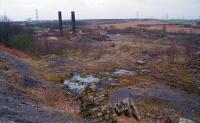
Ewan Crawford //2001
This level crossing is north of Coatbridge. Gartgill Road crosses the double track railway here on a section of line which is now a double track main line but started life as a portion of the Monkland and Kirktintilloch Railway, largely a coal railway, of 1826.
...
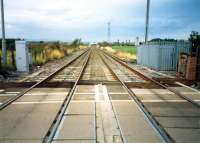
Ewan Crawford //1987
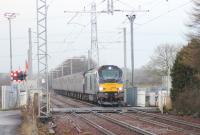
Alastair McLellan 15/12/2016
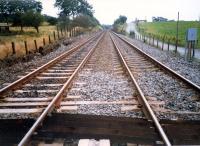
Ewan Crawford //1987
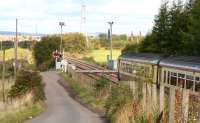
John Furnevel 25/09/2007
This former junction was formed between the 1826 Monkland and Kirktintilloch Railway and a short connection made by the 1848 Caledonian Railway which ran south crossing the 1831 Garnkirk and Glasgow Railway on the level en route and meeting its 1843 branch to Coatbridge Central at Garnqueen South Junction.
...
See also
Caledonian Railway
This station opened on the Monkland and Kirkintilloch Railway just east of the junction formed with the opening of the Garnkirk and Glasgow Railway in 1831.
...
See also
Gartsherrie Ironworks and Railways (William Baird & Co)
Garnkirk and Glasgow Railway
This box was at the north end of Gunnie Yard [1st] on the Monkland and Kirkintilloch Railway. It was on the east side of the line just north of where the Gartsherrie Ironworks and Railways crossed overhead. The yard started immediately to the south of the bridge.
...
See also
Gartsherrie Ironworks and Railways (William Baird & Co)
The yard consisted of sidings on either side of the former Monkland and Kirkintilloch Railway between Gunnie North Signal Box and Gunnie South Signal Box. The yard was largely associated with the local iron works, particularly the Gartsherrie Iron Works.
...
This signal box was at the south end of Gunnie Yard [1st] on the former Monkland and Kirkintilloch Railway east of the Gartsherrie Iron Works.
...
See also
Hornock Deviation (Monkland and Kirkintilloch Railway)
This was a large iron works to the north of Coatbridge. It was built by William Baird & Co in 1828. The location was chosen due to the quantity of blackband ironstone, coal and limestone in the area. The works produced forge quality iron which was internationally famous.
...
See also
Gartsherrie Ironworks and Railways (William Baird & Co)
Monkland Canal
This was a stopping place for passengers and junction on the Monkland and Kirkintilloch Railway. It was located to the south of Gartsherrie Road, near the junction with Hornock Road, and north of the Gartsherrie branch of the Monkland Canal. It was more or less where the later opened line west to Glasgow High Street was built.
...
This basin is today a tranquil location on the former Gartsherrie Branch of the Monkland Canal. It was formerly a transshipment point between the Monkland and Kirkintilloch Railway and the canal, having coal drops on its eastern side served from Howes on the M&K.
...
See also
Monkland Canal
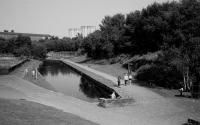
Bill Roberton //2003
This was a junction on the Monkland and Kirkintilloch Railway controlled by a signal box on the east side of the line.
...
See also
Langloan Railway
Sheepford Branch (Monkland and Kirkintilloch Railway)
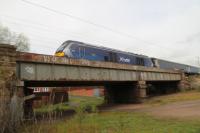
Alastair McLellan 07/05/2019
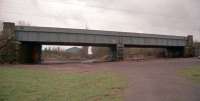
Ewan Crawford //2001
This was an island platform station. Parallel to it, and to the west, was Whifflet Lower and to the north, crossing both NBR and CR lines was Whifflet Upper. There was a platform building with a glazed canopy and access was via a footbridge which approached the south end of the platform from the Coatbank Street overbridge which crosses the NBR and CR lines.
...
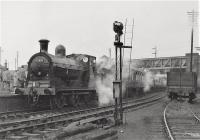
Brian Haslehust 20/10/1962

Alastair McLellan 10/10/2016
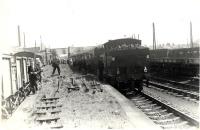
G H Robin collection by courtesy of the Mitchell Library, Glasgow 06/05/1961
This was the junction from which the 1828 Monkland and Kirkintilloch Railway was extended south in 1834 by the Wishaw and Coltness Railway, leaving the route to Palacecraig on a branch. From the same junction the Rosehall Railway ran south to the Rosehall Colliery.
...
See also
Wishaw and Coltness Railway
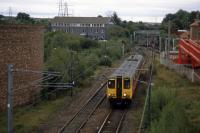
John Clark //1995
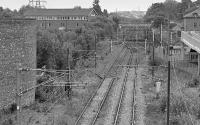
Bill Roberton //2001

Bill Jamieson 07/03/1971
This was a roll foundry making rolls used in the steel industry and other products. It was founded by Robert Tennent in 1857 whose firm was R. B. Tennent & Sons Ltd.
...
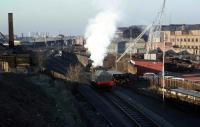
John Clark //1972
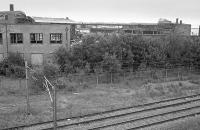
Bill Roberton //2001
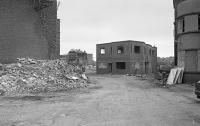
Bill Roberton //2001
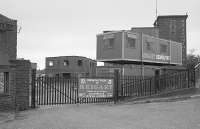
Bill Roberton 06/07/2001
To the east was a large yard for the Calder Iron Works on the line to Faskine. The yard was on the original alignment of the Monkland and Kirkintilloch Railway, the railway being deviated to the north. The far end of the deviation was at Calder Iron Works Signal Box [NBR].
...
See also
Glasgow, Bothwell, Hamilton and Coatbridge Railway
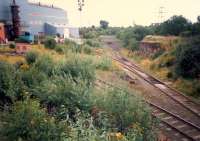
Ewan Crawford //1987

Ewan Crawford 26/09/2009

Ewan Crawford //1987
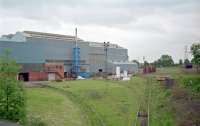
Ewan Crawford //1998
Short lived station to serve the Calder Iron Works. ...
More detailsThe original route of the railway passed right through the Calder Iron Works. The deviated line was north of the Calder Iron Works. This signal box was at the point where the deviation (over the Dixon Cut of the Monkland Canal) rejoined the original route at the east end of the deviation. The box was at the east end of double track and on the north side of line. The west end of the ...
More details
Kipps Branch
Passenger and goods line from Sunnyside Junction to Kippsbyre Colliery.
This was a stopping place for passengers and junction on the Monkland and Kirkintilloch Railway. It was located to the south of Gartsherrie Road, near the junction with Hornock Road, and north of the Gartsherrie branch of the Monkland Canal. It was more or less where the later opened line west to Glasgow High Street was built.
...
This was a double track junction east of Coatbridge Sunnyside. It was formed between the Kipps branch of the Monkland and Kirkintilloch Railway and the later New Monkland Line (Monkland Railways).
...
See also
New Monkland Line (Monkland Railways)

...
Alastair McLellan 04/05/2019
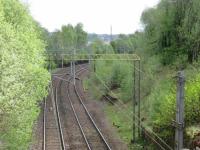
Alastair McLellan 04/05/2019
This works opened by the Monkland and Kirkintilloch Railway 'opposite' the Greenside Works of the Ballochney Railway between Greenside Junction (west) and Kipps Junction (east). The works was on the south side of the line and approached from the west. It was named for Mosside Farm, to the east. The works carried out maintenance of locomotives and wagons. Locomotives were built ...
More detailsThis shed was located to the north side of the Kipps branch of the Monkland and Kirkintilloch Railway just east of Greenside Junction. It was a double ended three road shed approach from both east and west. The site was bounded to the north by the gas works. There was a modern coal bunker at the east end of the site, close to the water tank. The turntable was to the west.
...
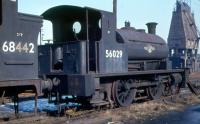
Colin Kirkwood 02/03/1963
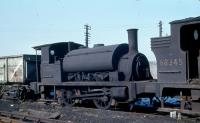
Colin Kirkwood 02/03/1963
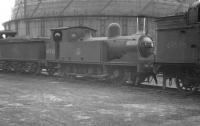
K A Gray //1960
This was a junction which grew to serve numerous lines and yards.
...
See also
North Monkland Railway
Ballochney Railway
This was a marshalling yard of around 17 single ended sidings east of Kipps Junction. It was located on the south side of the Ballochney Railway and was approached from the west.
...
See also
Ballochney Railway











